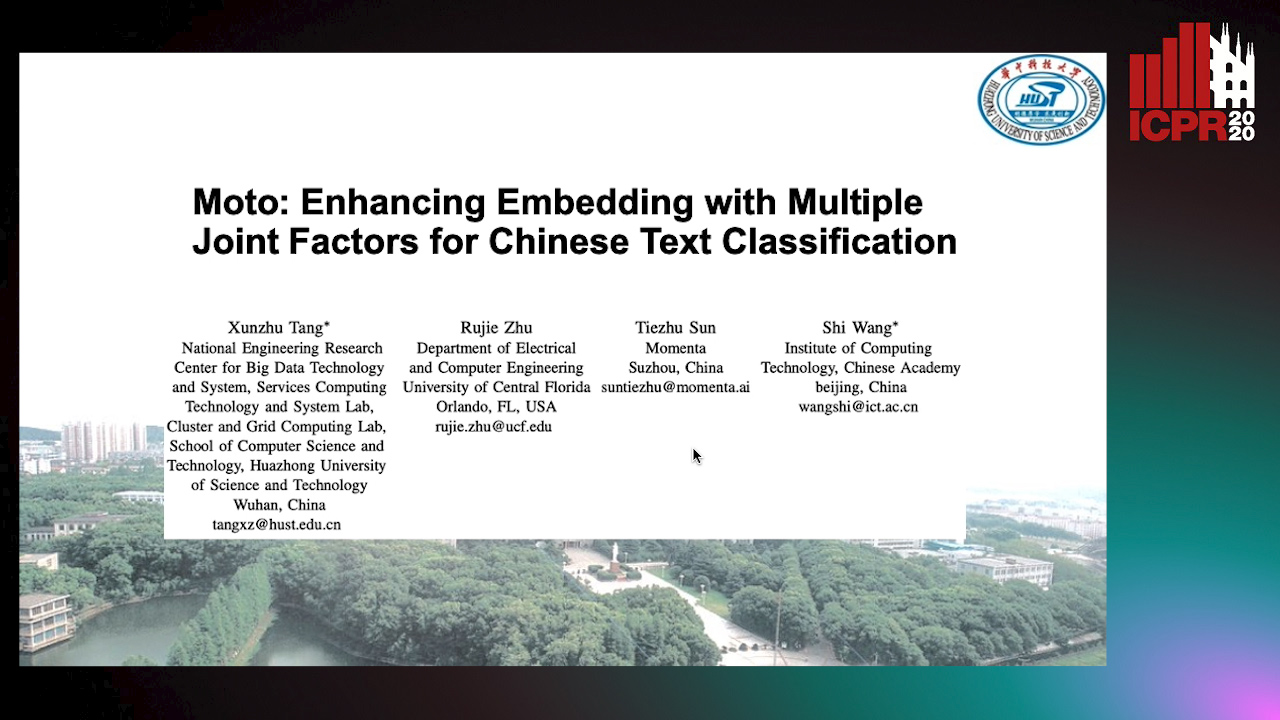Rujie Zhu
Papers from this author
CKG: Dynamic Representation Based on Context and Knowledge Graph
Xunzhu Tang, Tiezhu Sun, Rujie Zhu

Auto-TLDR; CKG: Dynamic Representation Based on Knowledge Graph for Language Sentences
Abstract Slides Poster Similar
Moto: Enhancing Embedding with Multiple Joint Factors for Chinese Text Classification
Xunzhu Tang, Rujie Zhu, Tiezhu Sun

Auto-TLDR; Moto: Enhancing Embedding with Multiple J\textbf{o}int Fac\textBF{to}rs
Abstract Slides Poster Similar